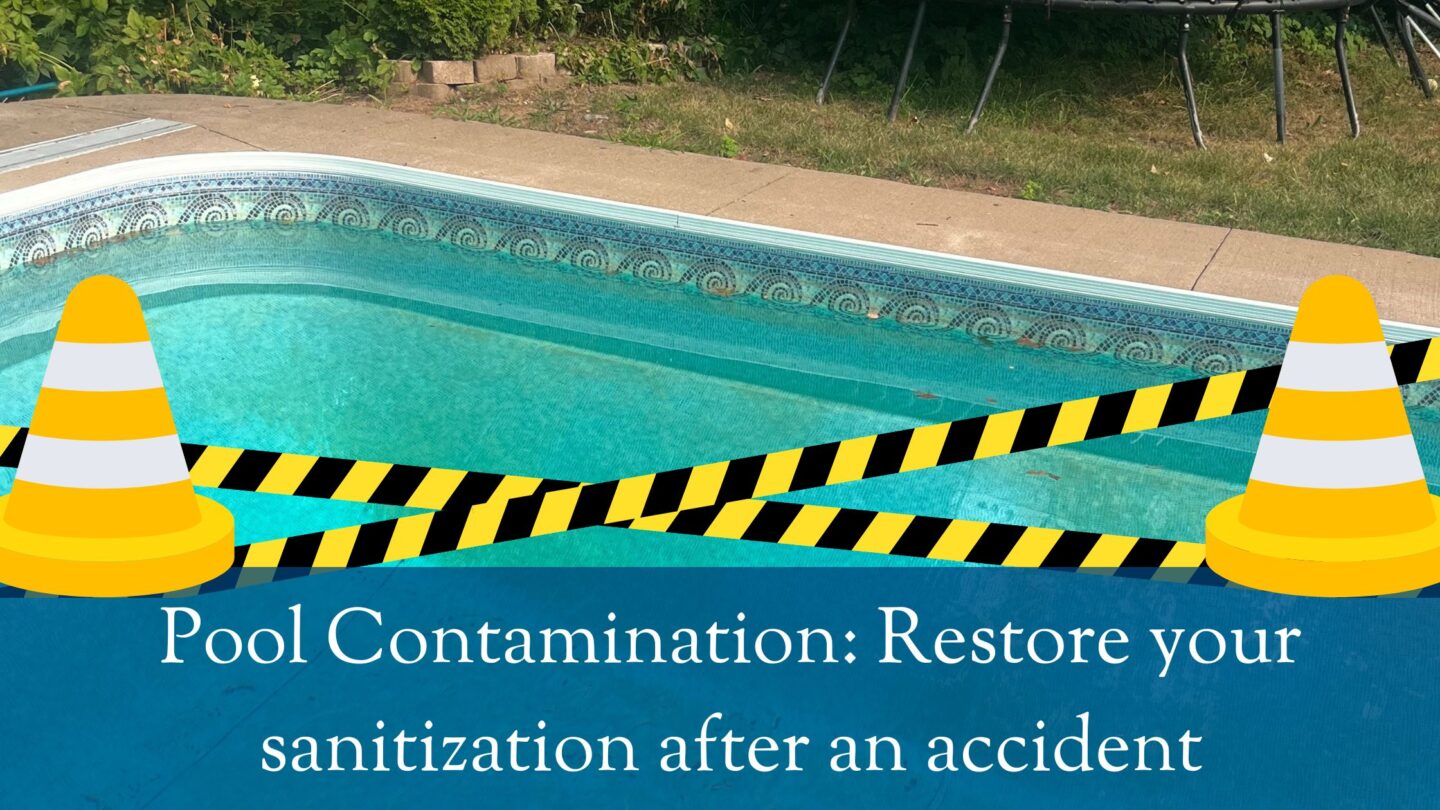When it comes to pool care, accidents happen, and they’re not always pretty.
Whether it’s a child’s “oops,” a pet jump, or a spill from the snack bar, pool contamination is something every pool owner faces. The key is knowing how to act fast, so your pool stays safe, sanitized, and ready for the next swimmer.
What Is Pool Contamination?
Contamination refers to anything that introduces harmful bacteria or pathogens into your pool. Common sources include:
- Fecal matter: The most common contaminant, and potentially the most dangerous.
- Vomit: Can introduce bacteria like norovirus.
- Urine: While more common, it can throw off your pool’s chemical balance and contribute to chlorine demand.
These contaminants not only affect your pool’s water quality but can also pose a health risk to swimmers if not addressed properly.
✨ Step-by-Step Guide to Pool Sanitation After Contamination
- Evacuate the Pool: The first step is to clear the pool. Don’t allow anyone to swim until the water is properly sanitized.
- Increase Chlorine Levels: After an accident, it’s time for shock treatment. Add enough chlorine to bring levels up to 20 ppm (parts per million). This super-chlorination will neutralize bacteria, viruses, and organic matter, ensuring your pool is safe.
- Run the Filter: Keep your filter running for 24 hours or longer. This will help remove contaminants and restore water clarity.
- Backwash and Clean: After the shock treatment, backwash the filter and brush the pool walls to remove any lingering debris or bacteria.
- Test the Water: Always test the pool water after shocking to ensure proper pH and chlorine levels before reopening the pool.
🏆 Stay One Step Ahead of Contamination
You don’t need to panic when accidents happen. With the right steps and quick action, you can keep your pool safe and sanitized for everyone to enjoy.
👉 Ready to be the hero in your pool care story? Stock up on our Power Chlor by BioGuard and always be prepared for whatever comes your way.


